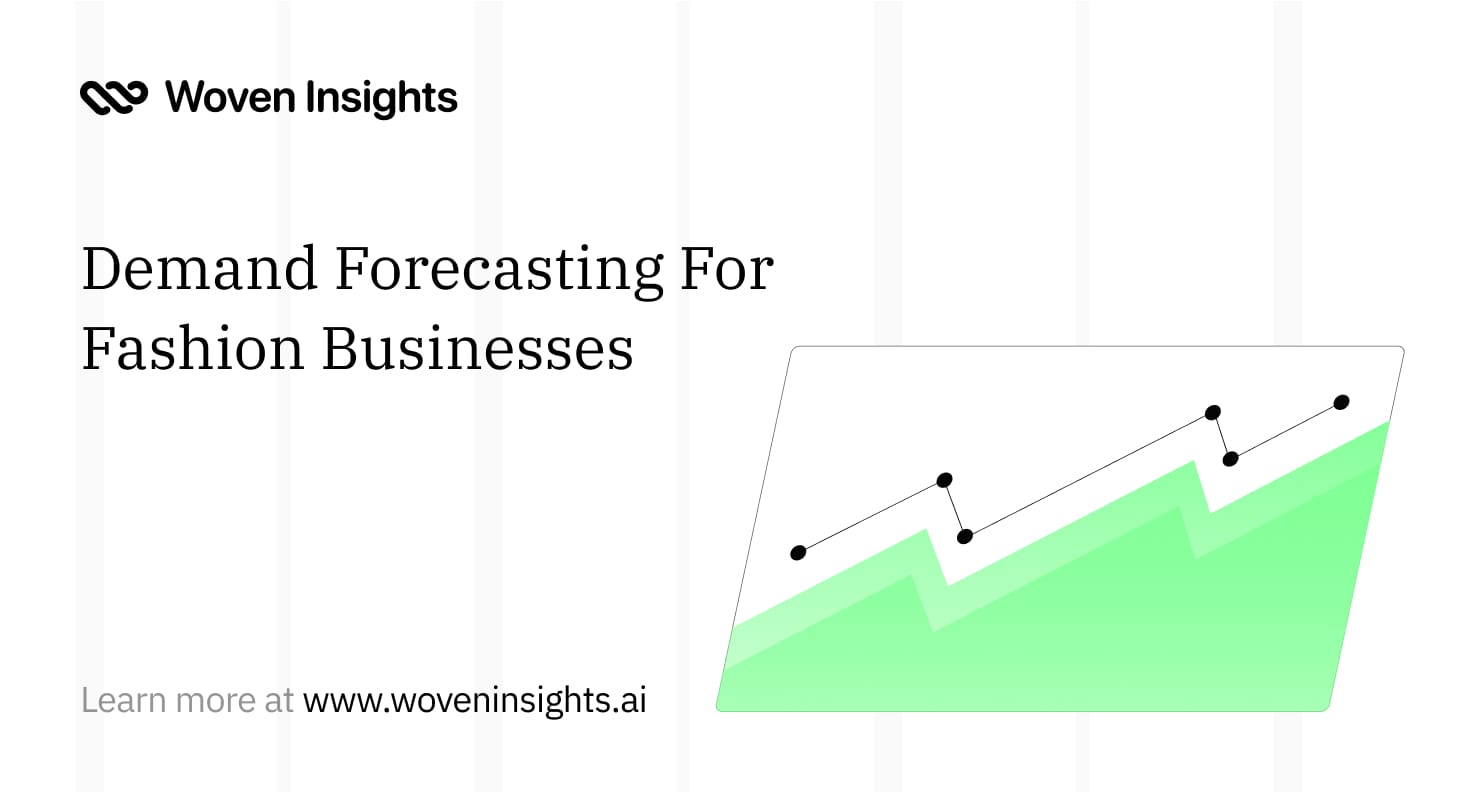Demand Forecasting For Fashion Businesses
Demand forecasting in fashion is like predicting the weather - except instead of atmospheric pressure and wind patterns, you're analyzing social media trends, consumer behavior, historical sales data, and countless other variables that influence purchasing decisions.

Introduction
The fashion industry loses an estimated $210 billion annually due to inventory miscalculations - either through stockouts of popular items or markdowns of overestimated styles. In an industry where consumers expect both immediacy and sustainability, the ability to accurately predict demand trends has never been more crucial for fashion businesses of all sizes.
Demand forecasting in fashion is like predicting the weather - except instead of atmospheric pressure and wind patterns, you're analyzing social media trends, consumer behavior, historical sales data, and countless other variables that influence purchasing decisions. It's the sophisticated process of anticipating future customer demand for products across different styles, materials, sizes, and colors, allowing businesses to optimize their inventory investments and maximize profitability.
What makes fashion forecasting particularly challenging?
Unlike basic commodities, fashion products are highly seasonal, trend-dependent, and emotionally driven. A viral TikTok video can suddenly make a forgotten style the must-have item of the season. Climate change is disrupting traditional seasonal buying patterns. And the rise of fast fashion has compressed traditional product lifecycles from months to weeks.
For fashion retailers, designers, and merchandisers, mastering demand forecasting isn't just about avoiding stockouts or markdowns - it's about:
- Reducing waste in an industry under increasing environmental scrutiny
- Maintaining healthy cash flow by investing in the right inventory
- Meeting customer expectations in an age of instant gratification
- Staying competitive in a rapidly evolving retail landscape
- Supporting sustainable business practices through better inventory management
In this guide, we'll explore the science and art of fashion demand forecasting, from fundamental principles to cutting-edge technologies. Whether you're a small boutique owner, an emerging designer, or a merchandiser at a major retail chain, you'll find actionable insights to transform your approach to inventory planning and demand prediction.
Key Factors Influencing Fashion Demand
Understanding the complex web of factors that influence fashion demand is crucial for accurate forecasting. Unlike traditional retail categories, fashion demand is shaped by an intricate interplay of quantitative data, cultural shifts, and psychological factors.
Here are the key elements that drive consumer fashion purchases and impact demand patterns:
1. Historical Sales Data Analysis
The foundation of any reliable forecast begins with historical sales data. However, in fashion, past performance requires careful interpretation:
- Sales Velocity: Understanding not just how much sold, but how quickly items moved at different price points
- Seasonal Patterns: Analyzing year-over-year performance while accounting for shifting seasons
- Style Performance: Tracking the success rates of specific design elements, colors, and silhouettes
- Price Sensitivity: Examining how different price points affect purchase behavior across product categories
- Channel Performance: Comparing sales patterns across different retail channels (online vs. physical stores)
2. Fashion Cycles and Seasonality
Fashion operates on multiple cyclical patterns that directly impact demand:
- Micro-Trends: Short-lived trends lasting 1-2 seasons, often driven by social media
- Macro-Trends: Longer-term shifts in consumer preferences lasting 2-5 years
- Core Products: Evergreen items with consistent demand patterns
- Traditional Seasons: Spring/Summer and Fall/Winter collections
- Resort and Pre-Fall: Impact of intermediate collections on buying patterns
- Fast Fashion Cycles: Compressed seasonal cycles with frequent collection updates
3. Consumer Behavior and Preferences
Modern fashion consumers are increasingly complex in their purchasing decisions:
- Demographics: Age, income, location, and lifestyle influences
- Shopping Habits: Frequency of purchases, preferred shopping channels
- Brand Loyalty: Impact of brand affinity on repeat purchases
- Sustainability Concerns: Growing influence of ethical and environmental considerations
- Occasion-Based Buying: How events and occasions drive purchase decisions
- Wardrobe Building: Understanding how consumers construct their wardrobes
4. Economic Indicators
Broader economic factors significantly influence fashion purchasing power:
- Consumer Confidence: Impact on discretionary spending
- Disposable Income Levels: Effects on premium vs. value purchases
- Inflation Rates: Influence on pricing strategies and consumer behavior
- Employment Rates: Correlation with fashion spending
- Currency Fluctuations: Impact on international brands and pricing
5. Social Media and Digital Influence
The digital landscape has made the world "smaller" and more accessible. This has greatly influenced fashion demand patterns through:
- Influencer Impact: How social media personalities drive trend adoption
- Viral Trends: Sudden demand spikes from social media phenomena
- Digital Marketing: Effectiveness of online campaigns on demand
- User-Generated Content: Impact of customer reviews and social sharing
- Platform-Specific Trends: Different trends across Instagram, TikTok, Pinterest, etc.
6. Weather Patterns
Climate plays a crucial role in fashion demand:
- Seasonal Transitions: Impact of weather on collection launches
- Unexpected Weather: How unusual patterns affect seasonal item sales
- Climate Change: Long-term effects on traditional seasonal planning
- Regional Variations: Different weather patterns across market regions
- Weather-Specific Products: Demand patterns for weather-dependent items
7. Competitive Landscape
Understanding the market context is essential:
- Competitor Actions: Impact of competitors' promotions and launches
- Market Saturation: Effect of similar products in the market
- Price Positioning: Competitive pricing influences on demand
- Innovation: Impact of new technologies or materials
- Market Share: Understanding brand position and growth opportunities
Understanding these key factors enables fashion businesses to create more accurate demand forecasts. However, the art lies in understanding how these factors interact and which carry the most weight for your specific market segment and customer base.
Success in fashion demand forecasting requires:
- Factor Weighting: Determining the relative importance of different influences
- Cross-Factor Analysis: Understanding how different factors interact
- Dynamic Adjustment: Regular reassessment of factor importance
- Market-Specific Considerations: Adapting to local market conditions
- Technology Integration: Using advanced analytics to process multiple data points
